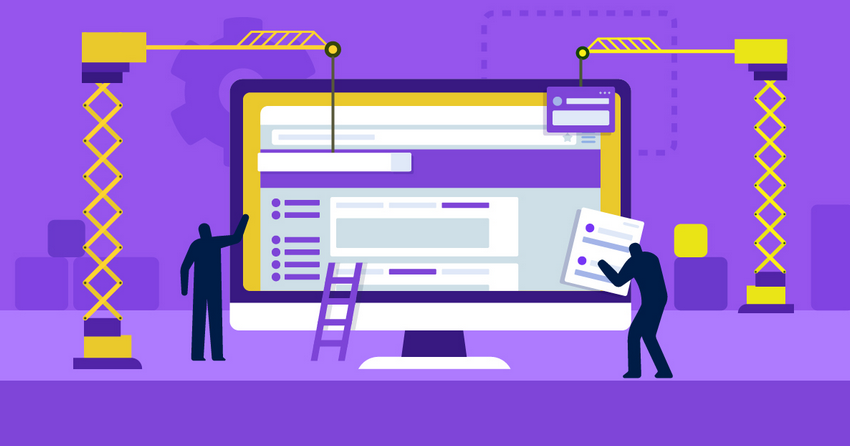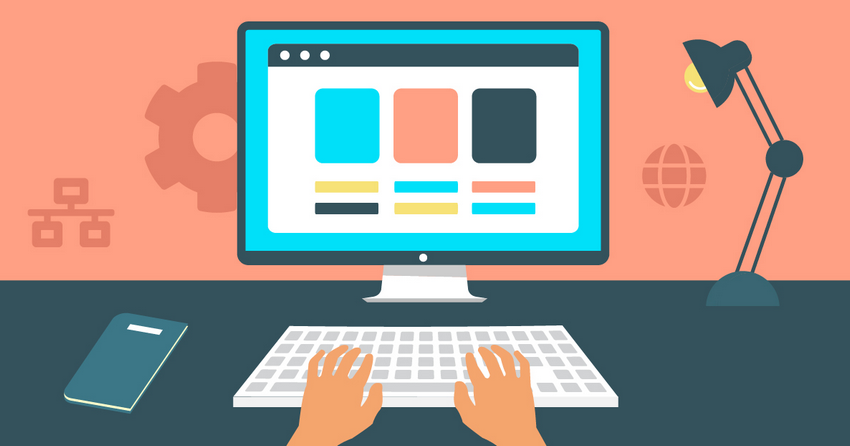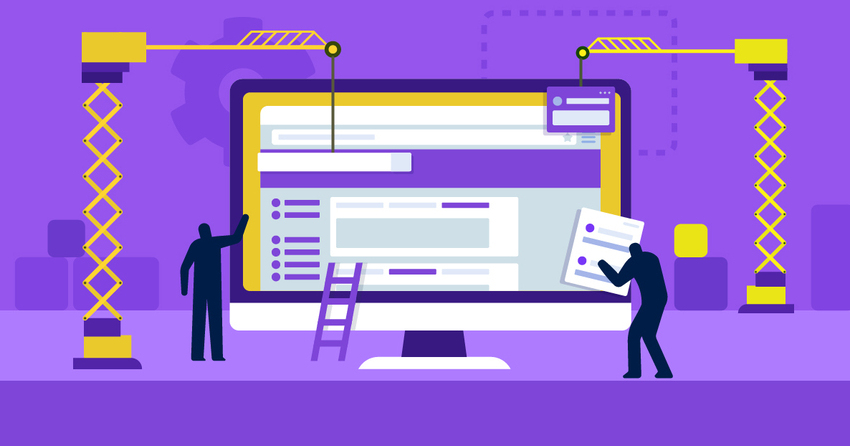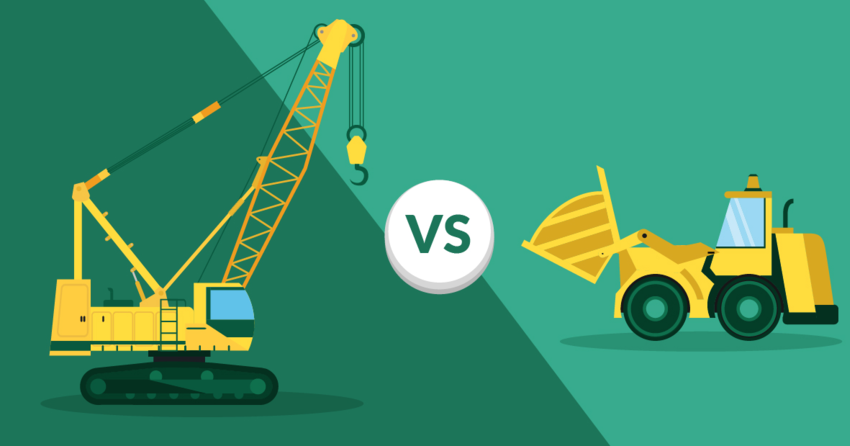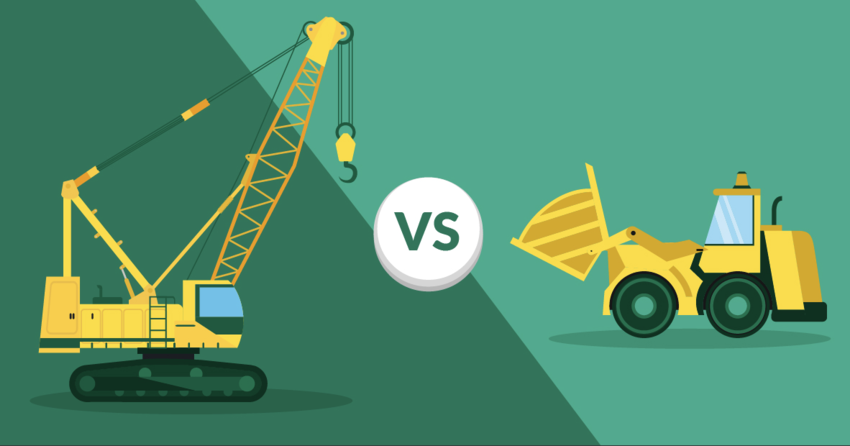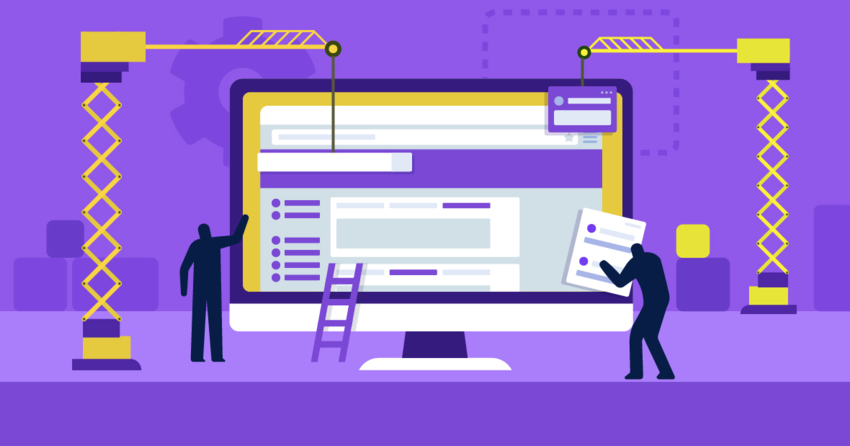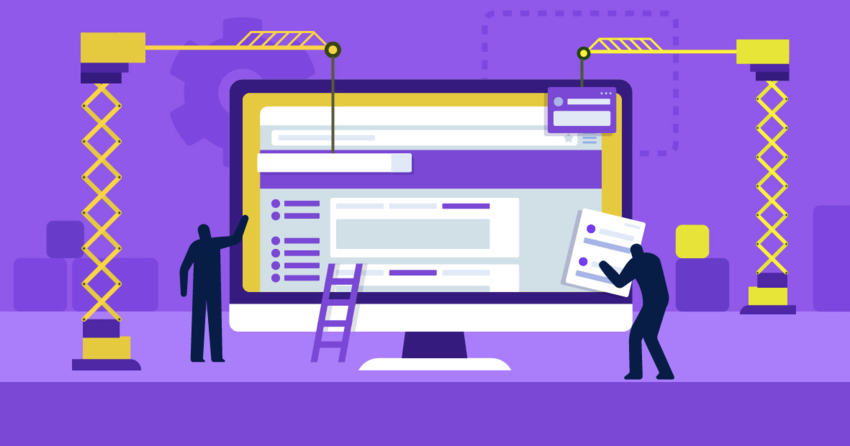The real cost of building a website varies widely depending on several factors. Different methods suit different business needs, knowledge levels, and budgets. With the rise of website builders, freelance platforms, and content management systems (CMSs), there are now more options than ever before.
On average, you can expect to invest around $25/month for a full-featured business website. However, if you opt for a paid website builder, you can spend as little as $5 monthly, while a professional web designer could charge you over $1,000 as a one-time fee.
Cheaper builders may lack essential features, while higher-priced ones don’t always offer the best value. Because of this, I’ve spent weeks meticulously creating a complete guide to find out how much it costs to build a website in 2025, and who each option is best suited to. Keep reading to learn more about which method is right for you.
Quick Guide: How Much Does It Cost To Build a Website in 2025?
| Option | Approximate Cost | Best For | At a Glance |
|---|---|---|---|
| Build a Website for Free | $0 | Personal projects | Start free, but with ads, a subdomain, and limited features |
| Use a Paid Website Builder | $5–$300+ per month |
Professionals & small teams |
Remove ads, get a domain, access e-com & marketing tools |
| Self-Host a WordPress Site | $3–$500+ per month (+$0–$250 once off) |
SMBs and experienced designers |
Maximum control, but needs more setup & maintenance |
| Hire an Affordable, Professional Designer | $3–$200 per month (+$100–$1,750 once off) |
Large brands and unique visions | Totally unique, custom-built design, but most expensive |
Method #1: Build a Website for Free – Ads and Limits Apply
Cost: Free
Best suited for: Personal projects, community groups, brand-new small businesses
Pros:
✔ Simple, intuitive design process
✔ Technical details, like hosting and resource allocation, are handled for you
Cons:
✘ No custom domain names
✘ Ads for your chosen website builder may appear
✘ Only basic features, with no e-commerce support
A website builder is a platform that allows you to create your website regardless of your technical expertise. Paid or free, all website builders operate under the same basic concept: you get the tools to create and manage your website through a visual, user-friendly interface.
Free website builders are the way to go if you want to create a website and host a site without spending anything. And, free website builders are a great starting point for you to experiment and learn design fundamentals. All the backend details, like hosting, domain names, memory allocation, and content management, are handled for you.
However, free plans are usually limited. You typically won’t get advanced features like e-commerce, events, or customer accounts. Your site will likely display ads for your website builder and be tied to a subdomain like mysite.websitebuilder.com.
If you’re interested in exploring this option, here are some of the best free website builders to get started with:
1. Wix: The Most Complete Free Plan

Wix’s free plan includes its full website editor and a complete catalog of 2500+ templates, which isn’t something I can say about a lot of free website builders. Thanks to Wix’s drag-and-drop editor and hundreds of elements, you can design virtually any type of website you want. You can also set up a blog and email newsletters.
However, like most free builder plans, Wix doesn’t include e-commerce. Wix’s free plan comes with 500 MB of storage, which is more than enough for personal projects, but content-heavy sites may struggle.
Read our expert Wix review for more details.
| Free Templates | 2500+ |
|---|---|
| Storage on Free Plan | 500 MB |
| Builder Subdomain | accountname.wixsite.com/siteaddress |
| Starting Price | $0 |
2. SITE123: Fast, Free, and Simple Website Builder

SITE123 builds a website for you in under a minute. Once you’ve signed up, simply provide your industry, your business’s name, and a short description, and SITE123 selects a template for you. While it might not offer as many customization features as others, its intuitive editor makes setup fast and easy.
However, unlike Wix, SITE123 limits some customization features behind its paid plans. You won’t be able to create custom forms, add your own code, or use external links on the free version.
Check out our full SITE123 review for more information.
| Free Templates | 80+ |
|---|---|
| Storage on Free Plan | 250 MB |
| Builder Subdomain | numbersandletters.site123.me/siteaddress |
| Starting Price | $0 |
3. Webador: Free Builder for Simple Sites With Unlimited Storage
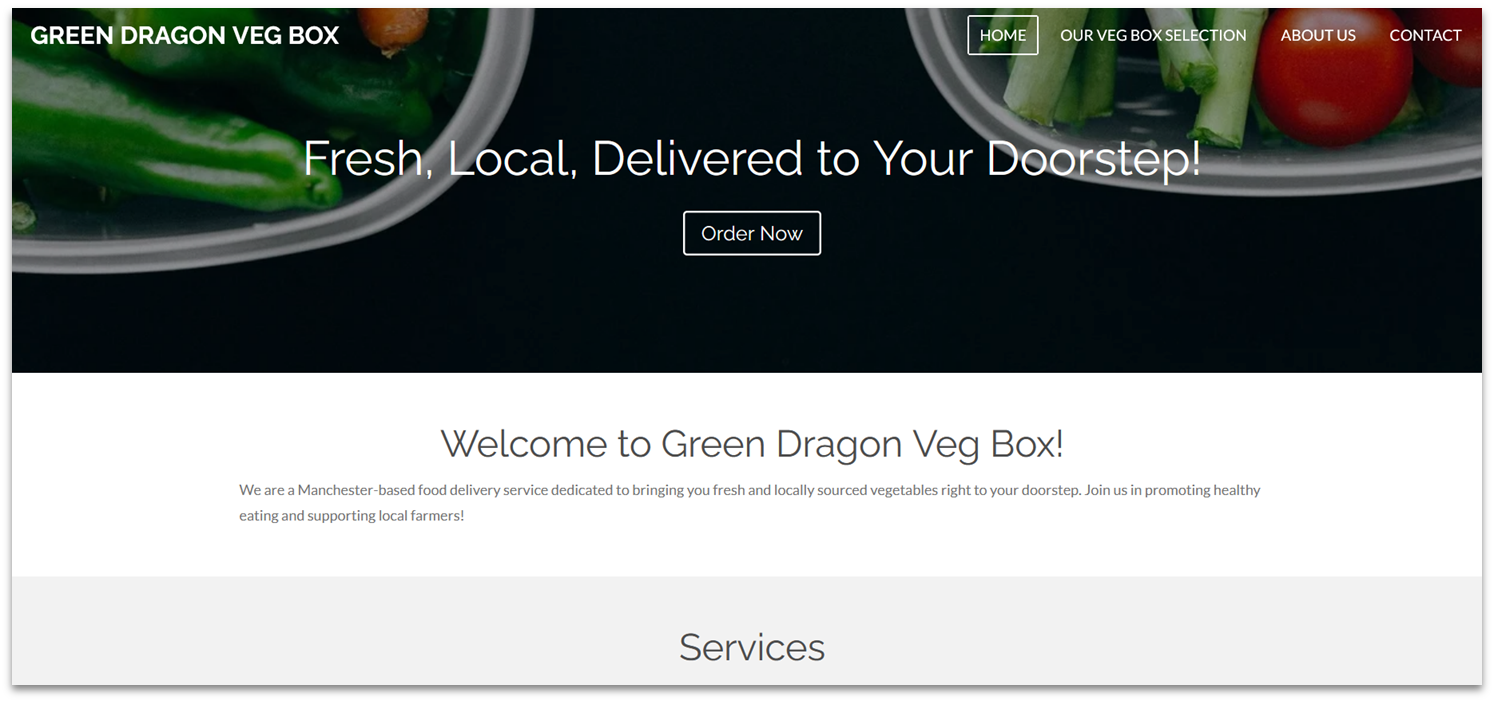
Webador’s free AI-powered wizard builds your website with a few simple prompts. It’s similar to SITE123, but its AI tool takes extra information, like your business goals, color scheme, and the pages you want to build a full website. From there, you can quickly edit the rest with its intuitive editor.
Unfortunately, you can’t publish your site unless you register a domain name through the platform. However, Webador is one of the few builders to offer unlimited storage, bandwidth, and web pages on the free plan.
Take a look at our comprehensive Webador review to learn more.
| Free Templates | 50+ |
|---|---|
| Storage on Free Plan | Unlimited |
| Builder Subdomain | temp-randomletters.webadorsite.com (used for previews only) |
| Starting Price | $0 |
4. WordPress.com: Best Free Plan for Blogging

WordPress.com is the browser-based version of the WordPress CMS. As such, WordPress includes powerful blogging tools, page structuring options, and flexible design options. You also get extra features like security, automatic backups, SEO tools, galleries, slideshows, and contact forms through the Jetpack plugin.
On the downside, the free plan has some important restrictions: you can’t access WordPress’s plugin library, so you can’t use third-party page builders for design, integrated payment options for e-commerce, or optimization plugins. Support is limited to community forums, and you only get a limited selection of free themes.
Our in-depth WordPress.com review has more information.
| Free Templates | 300+ |
|---|---|
| Storage on Free Plan | 1 GB |
| Builder Subdomain | sitename.wordpress.com |
| Starting Price | $4.00 |
5. Square Online: The Only Free E-commerce Solution
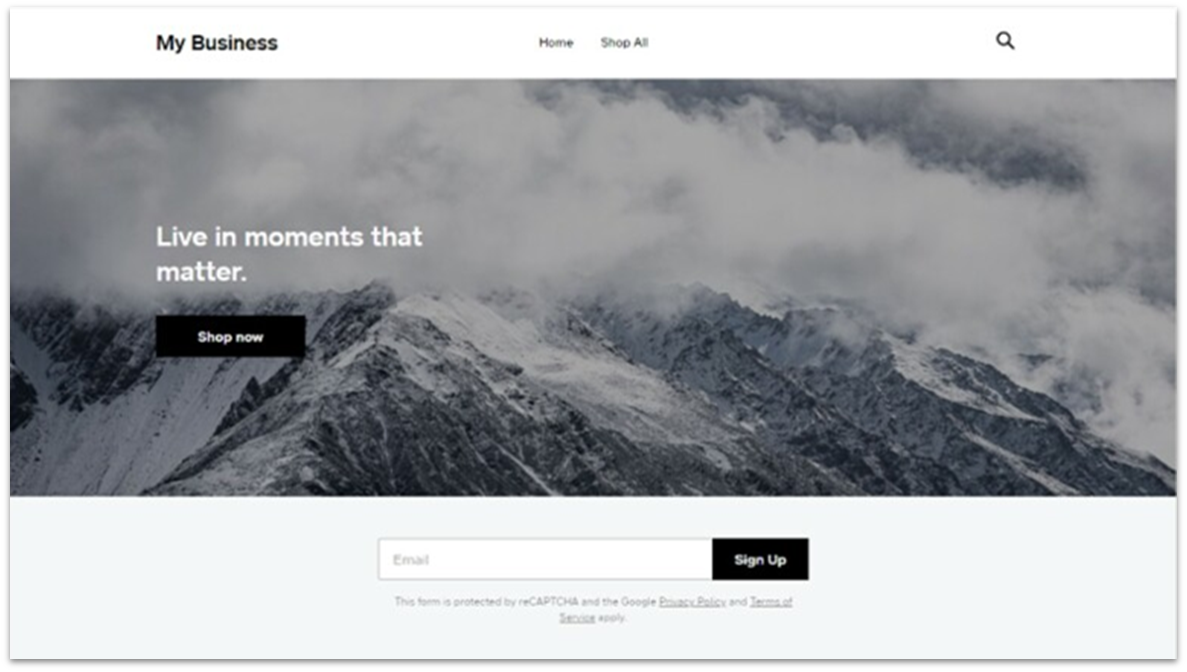
Square Online is one of the only (respectable) builders that gives you access to e-commerce capabilities on the free plan. The e-commerce features are pretty decent for a free plan, too. You get unlimited items, inventory management, coupons, contact forms, and an Instagram integration that lets you sell directly via social media.
It’s worth noting, however, that Square Online charges a processing fee of about 3% on all transactions. Also, your design options are restrictive, so you won’t get the most unique-looking e-commerce website.
Find out more from our detailed Square Online review for more details.
| Free Templates | ✘ |
|---|---|
| Storage on Free Plan | Unlimited |
| Builder Subdomain | sitename.square.site |
| Starting Price | $0 |
What You Actually Get When Building a Website for Free
Just to recap, here’s a quick comparison of those free website builders:
| Storage on Free Plan | Free Plan Limitations |
Best For | |
|---|---|---|---|
| Wix | 500 MB | No analytics, marketing features, or e-commerce features |
Personal projects with a focus on creative expression |
| SITE123 | 250 MB | Less customization options, limited bandwidth, no e-commerce features |
Simple websites that can be created fast |
| Webador | Unlimited | No email account, online store, or statistics |
Limited-page websites for sharing files and information |
| WordPress.com | 1 GB | No access to plugins or custom templates, and no live customer support |
Personal blogging |
| Square Online | Unlimited | No advanced item settings, themes, or product categorization |
Small e-commerce stores |
Method #2: Use a Paid Website Builder – From $5/Month
Cost: $5–$300+ per month
Best suited for: Freelancers, small businesses, artists and creatives, interest groups
Pros:
✔ Intuitive site-building process that lets you easily create and modify your site
✔ Includes hosting, domain names, email inboxes, marketing, SEO, and more
✔ Easy to scale up or down based on your budget and business needs
Cons:
✘ Costs increase significantly for enterprise-grade resources
✘ Domain names usually only included for the first year
If you’re creating a website for professional purposes, consider upgrading to a paid plan. A paid plan lets you connect a professional domain to your website to help you build a strong brand image. Plus, it removes those pesky banner ads that distract from your hard work.
The pricing for a paid website builder can range anywhere from $3 to over $150 per month. However, higher-tier plans don’t always provide the performance you need as your site grows.
A website with basic e-commerce features typically costs around $15 each month. If you need more advanced selling and marketing capabilities, table booking services, or the ability to make custom service packages, you’ll pay more. On average, a fully featured professional site costs about $30 per month.
This might seem like a lot, but paid website builder plans often bundle everything you’d otherwise buy separately with self-hosting. So, you could save money by getting everything as a package.
If you’re considering a paid plan, here’s a small breakdown of the costs you should look out for:
| Item | Cost |
|---|---|
| Website Builder Plan | Range: $3–$150+ per month (depending on the builder, chosen plan, and introductory discounts) Typical price with e-commerce: $16–$25 per month |
| Website Domain | Range: $0.99–$200+ per year Typical price: $0.99–$9 per year (the first year is usually included in your plan) |
| Website Hosting | $0 (included in your plan) |
| SSL Certificate | $0 (included in your plan) |
| Website Template/Theme | $0–$120+ per month Typical price: $0 |
| Add-Ons/Plugins | $0 – $100+ per month |
| Custom Email Address | $0–$15 per month |
| Total | Range: $5–$300+ per month Typical price with e-commerce: $5–$30 per month |
Of course, your website design cost will not only depend on the plan you choose but the builder itself. I’ve compared some of the most popular web builders out there and created a short list of the paid website builders I recommend:
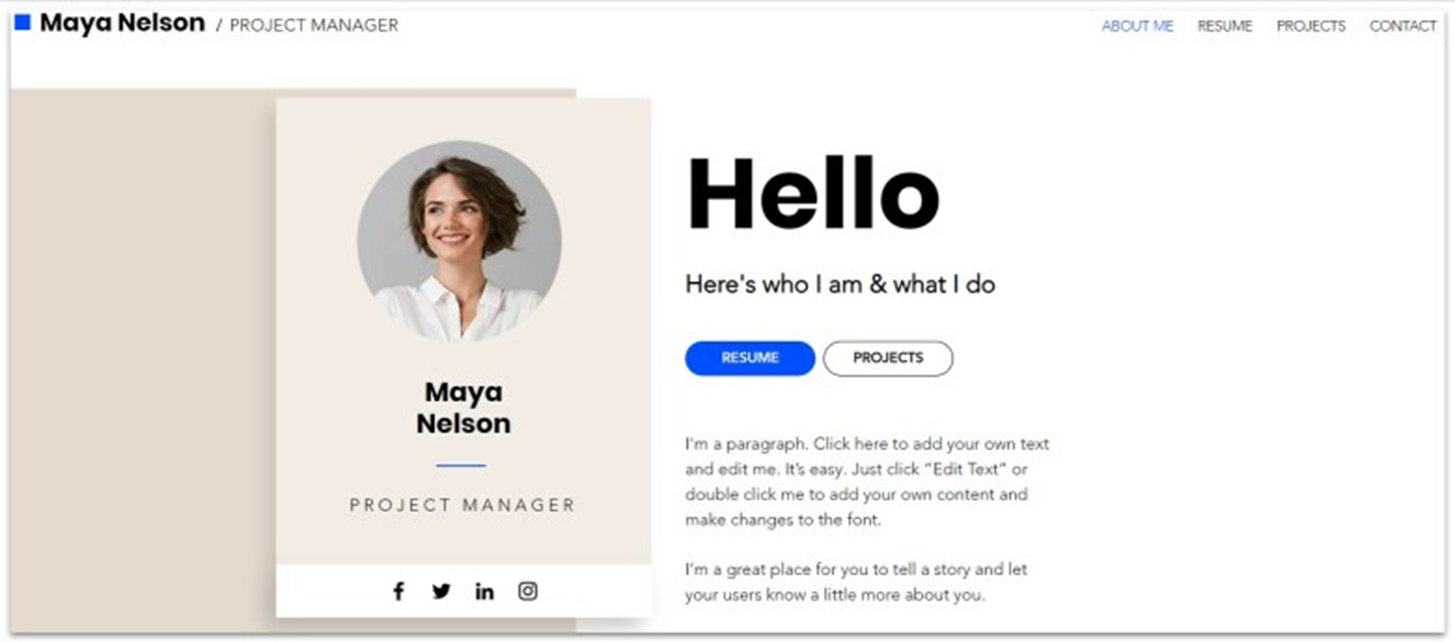
Though you already get access to Wix’s full customization features on the free plan, upgrading to a paid plan (starting at $17.00) gives you more storage space and access to Wix’s proprietary marketing suite. On the Core plan and above, you can access site analytics tools, create customer accounts, and even accept payments.
Learn more in our expert Wix review.
| Templates | 2500+ |
|---|---|
| Storage | 2 GB – Unlimited |
| Money-Back Guarantee | 14 days |
| Starting Price | $17.00 |
2. Squarespace: Best Paid Builder for Image-Rich Websites

Squarespace’s collection of 180+ professionally designed templates is dedicated to showing your brand’s visuals in the best way. Every plan includes e-commerce and a complete marketing and SEO suite, which makes it easy to start a successful online store or get plenty of table bookings for your restaurant.
Read our expert Squarespace review for more details.
| Templates | 160+ |
|---|---|
| Storage | Unlimited |
| Money-Back Guarantee | 14 days (annual plans only) |
| Starting Price | $16.00 |
3. Hostinger Website Builder: An Affordable Builder With AI-Powered Tools
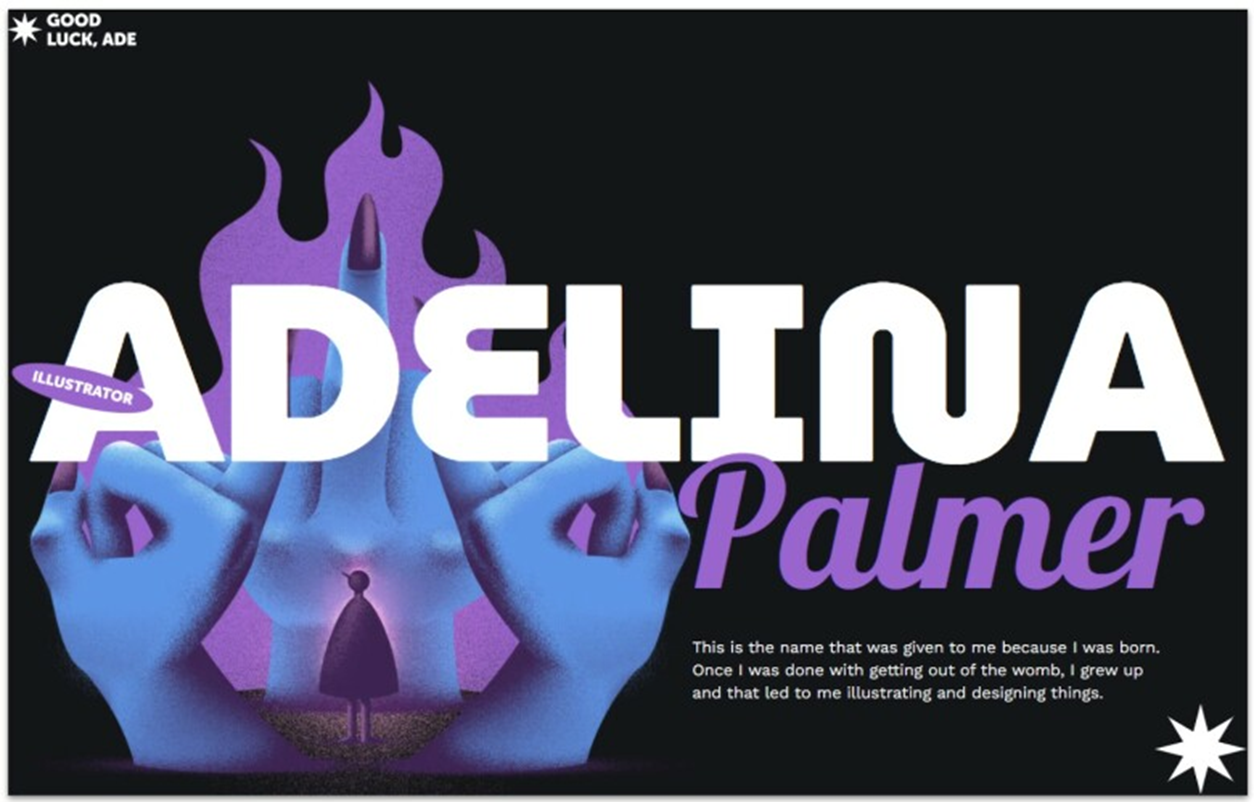
Hostinger’s Website Builder takes a middle step in simplicity. While it isn’t quite as customizable as Wix, it still provides high-quality templates and powerful customization tools to help you create a website that matches your vision. You can even supercharge your website’s design with Hostinger’s AI and e-commerce tools, all available in its Business Website Builder plan that costs $2.99 per month.
Read our expert Hostinger Website Builder review for more details.
| Templates | 180 |
|---|---|
| Storage | 25 GB–50 GB |
| Money-Back Guarantee | 30 days |
| Starting Price | $2.99 |
4. IONOS: Best for Business With Dedicated Support
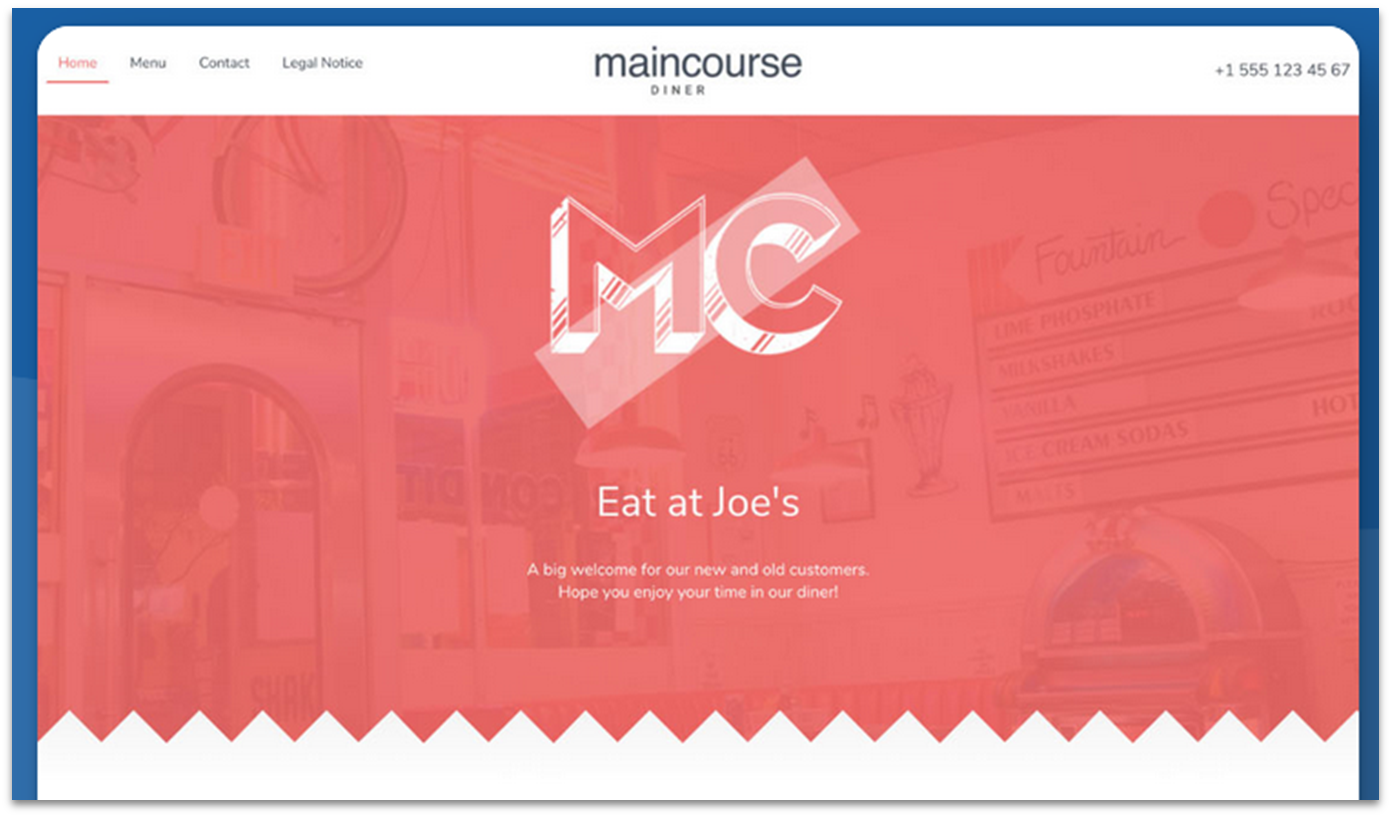
The IONOS website builder is one of the more basic options on this list, but it makes up for it with a dedicated customer support representative for every client. This means help is always available from someone who knows your goals almost as well as you do. You’ll also get powerful analytics tools and access to the entire IONOS ecosystem.
For more information, read our expert IONOS Website Builder review.
| Templates | 40+ |
|---|---|
| Storage | 10 GB–Unlimited |
| Money-Back Guarantee | 30 days |
| Starting Price | $1.00 |
5. SITE123: Simple Website Building at Low Prices

SITE123’s premium plans give you access to multilingual capabilities to ensure that your website has a maximum global reach. You can also create custom mailboxes, create a basic e-commerce store, and track your website’s performance with advanced analytics options. However, the site builder isn’t as intuitive as some other options on this list.
Find out more in our full SITE123 review.
| Templates | 80+ |
|---|---|
| Storage | 3 GB – 50 GB |
| Money-Back Guarantee | 14 days |
| Starting Price | $12.80 |
Other Notable Website Builders
If you need more options, these website builders also offer a great platform – they just didn’t quite make our top 5.
- Webador. A Webador Pro plan gives you advanced statistics, Google Analytics, and e-commerce features. It’s also one of the few website builders to charge a 0% transaction fee, so it’s a good choice for small businesses on a budget. Unfortunately, the editor is pretty basic.
- Shopify. It’s the world’s biggest e-commerce platform for a reason. Not only does it give you access to advanced shipping, mailing, and tax calculation options, but it also offers robust technical infrastructure to support your web store. While there are some free templates, most cost upwards of $120.
- BigCommerce. If you have an e-commerce store but don’t like how restrictive Shopify’s editor is, then BigCommerce might be for you. You’ll get more flexibility with its drag-and-drop editor, and even more features than its competitor. However, it does come with a heftier price tag.
- WordPress.com. Upgrading to a paid WordPress.com plan gives you access to the plugins you need to create a full-featured website. Plus, you’ll be able to add your own custom code. It does, however, have a higher learning curve for beginners compared to other builders.
- Web.com. This builder provides a good balance between advanced features and user-friendliness. You can even hire a web designer through the platform to set up your site for you. The downside is that the editor can be frustrating, so you may actually need a web designer to help you get started.
What You Actually Get When You Use a Paid Website Builder
Here’s a quick overview of how the most popular plans of each builder stack up against each other:
| Free Domain? | Free Email Address? | Apps/Add-ons? | E-commerce Features? | Starting Price | ||
|---|---|---|---|---|---|---|
| Wix Core Plan |
✔ | ✘ | ✔ | ✔ | $29.00 | |
| Squarespace Business / Core Plan |
✔ | ✔ | ✔ | ✔ | $23.00 | |
| Hostinger Business Website Builder |
✔ | ✔ | ✔ | ✔ | $2.99 | |
| Webador Pro Plan |
✔ | ✔ | ✘ | ✔ | $9.00 | |
| IONOS Plus Plan |
✔ | ✔ | ✔ | ✔ | $1.00 | |
| Web.com Website + Marketing Plan |
✔ | ✔ | ✔ | ✘ | $7.99 | |
| SITE123 Professional Plan |
✔ | ✔ | ✔ | ✔ | $12.80 | |
| Shopify Basic Plan |
✘ | ✔ | ✔ | ✔ | $29.00 |

Method #3: Self-Hosted WordPress Site – Flexible, but More Complex
Cost: $5–$500+ per month
Best suited for: Medium to enterprise-level businesses, content-heavy websites
Pros:
✔ Almost limitless customization options for your website
✔ Easy site migration and modular options to take advantage of hosting and domain offers
✔ Use one of the world’s most powerful CMSs
Cons:
✘ Requires more technical know-how
✘ Need to pay for your website, hosting, domain, etc., separately
Though it involves a steeper learning curve, using the WordPress CMS opens up a world of possibilities for your website in terms of design, function, and scalability. Unlike with the browser-based version, you’ll be able to add custom code and integrations to make your website look and act the exact way you need.
It isn’t the only CMS available out there, but it’s the most popular. You’re also bound to find more WordPress optimization features across different hosting providers than you would for other systems like Joomla.
Though the WordPress CMS is free, you’ll need to find a hosting provider for your site if you decide to go this route. You can think of hosting as a kind of rental cost for web server space to store your website. The bigger the website, the more space, performance, and security features you’ll need, and those come at a price.
A hosting subscription can cost you from $1.50 up to $70 per month, with additional costs for add-ons. It can also cost more if you pay for a dedicated server, which you might need if your website needs a higher guaranteed level of performance.
Don’t let this dissuade you, though. While it might be a little more complex, self-hosting your website gives you a lot more control and freedom over it.
Here’s a quick overview of how much you can expect to pay for web hosting:
| Item | Cost |
|---|---|
| WordPress Subscription | $0 |
| Website Domain | $9–$15 per year (average) |
| Website Hosting | $1.50–$70 per month |
| SSL Certificate | $0–$200 per year (often included for free with hosting packages) |
| Website Template/Theme | $0–$70+ one-off cost |
| Add-Ons/Plugins | $0–$250+, depending on pricing structure |
| Custom Email Address | $1–$15 per month |
| Total | $3–$185 per month (plus one-off costs) |
Going the self-hosting route also means you’ll have to pay for some services typically included by website builders. Let’s take a closer look at the most important costs associated with hosting your own website:
Web Hosting Costs
Here’s a quick overview of some of the most popular kinds of hosting and their example prices:
- Shared hosting. Shared hosting means that you share your server’s resources with other users. Hostinger, a shared hosting provider that delivers outstanding performance scores, offers shared hosting plans starting at $2.99.
- Cloud hosting. Your website is hosted on an online network (the “cloud”) rather than a single physical machine, improving your protection against downtime or server failures. You can get affordable shared cloud hosting from hosts like IONOS with plans starting at $7.00.
- Virtual private server (VPS). A VPS lets you choose your resources, select your server OS, and get full control over hosting. For example, if you opt for HostArmada’s self-managed VPS hosting with ample resources, you can expect to pay a minimum of $1.49.
The biggest benefit of choosing your own hosting provider is that you can find one that meets your performance requirements. You can also migrate your website to take advantage of introductory offers, as you’re not locked into a single provider.
Domain Costs
A domain name is your website’s address on the internet, and it’s important to choose a memorable name. Whether you’re using a paid website builder, self-hosting WordPress, or paying a web designer or developer, you’ll need to purchase a domain name. Domain costs typically fall into two categories:
- Domain name. This is the first part of your address. The price of the domain name itself varies based on its popularity. If your desired domain name is available, you’ll only pay the standard registration fee. However, if it’s already in use, you may need to negotiate prices with the current owner.
- Top-level domain (TLD). TLDs like .com and .net have different prices. A .com domain typically costs around $10 per year, while an .xyz domain can be as affordable as $1 per year. It’s worth investing a little more in a TLD that lends credibility to your site – the cheaper ones can get blacklisted because they’re used by scammers.
You may get a free domain for the first year of your hosting plan, but this varies between hosts. Some registrars also offer cheap initial offers. Remember that you usually have to renew your domain name yearly
Security Costs
Like website builders, hosting providers offer essential security features with your chosen plan.
Secure Socket Layer (SSL) certificates authenticate your website’s identity and encrypt your customers’ data, so they’re vital for e-commerce websites. While individual SSL certificates can cost between $30-$300 annually, most quality hosting plans include SSL certificates at no extra charge alongside their security features.
Usually, you’ll also get distributed denial of service (DDoS) attack protection, firewalls to filter harmful traffic, and regular malware scans to keep your website running smoothly. Many hosting providers also include automated backup systems to ensure data recovery in case of a breach.
Plugin Costs
While the platform itself costs nothing, you may need paid plugins to get the features you want. Free versions exist, but they usually come with limited capabilities. These costs can quickly add up, especially for business websites requiring multiple premium functionalities.
Here’s a quick breakdown of the cost of some popular plugins:
- Akismet Pro. $10–$60 per month to protect your website from spam
- Jetpack. $10+ per month to set up automatic backups, malware scans, and grow your audience
- Yoast SEO Premium. $99 per year to optimize your website’s SEO
- Elementor Pro. $5+ per month to design your website
Some plugins, like WooCommerce add-ons, require one-time payments, which are often higher upfront since they aren’t recurring. You can expect to spend anywhere from $80–$300.
Email Costs
Some hosting providers include a professional email address for free with your plan, but this isn’t always the case.
If you don’t already have one, you should be able to get a business email for around $3 per month. More expensive options, like Google Workspace, give you an email address as well as cloud storage and other tools.
Method #4: Hire a Web Designer – Totally Unique, Higher Costs
Cost: $100–$1,500+ one-off cost, plus $3–$200 per month
Best suited for: Large businesses and enterprises, or websites requiring unique designs and complex features
Pros:
✔ Receive a fully unique website that’s ready to use on delivery
✔ One-off cost eliminates the need for an ongoing website builder subscription
Cons:
✘ Can be very expensive
✘ Hosting, domain names, and other fees are not included
✘ May take longer to deliver than using a website builder
A seasoned designer will know the best way to transmit a brand’s tone and structure a website to attract target visitors and make it stand out.
Because you’re commissioning a bespoke website, costs can vary widely. Some designers charge by the hour, while others work on a flat fee. Generally, you can expect to pay around $100–$1,500 if you hire a freelance web designer, which will include a set number of revisions.
Additional revisions or ongoing support to keep your site updated usually incur extra costs. Not only that, you still need to include website costs such as hosting or a subscription. Some web designers may only work with a certain CMS or website builder, too.
If you need unique features or changes to the underlying technology of your website, you’ll also need to hire a developer. You can usually get a package of design and development from an agency. Agencies charge more (usually around $2,000–$10,000 for a standard company website), but you get the benefit of having several seasoned professionals working on your site.
Here’s an outline of the total expenses you might have to bear:
| Item | Cost |
|---|---|
| Website Designer | $100–$1,500 one-off cost |
| Subscription (if using website builder) |
$0–$30 per month |
| Website Domain | $9–$15 per year |
| Website Hosting (if using WordPress.org) |
$1.50–$70 per month |
| SSL Certificate | $0–$200 per year (but often included for free with hosting/builder plans) |
| Plugins | $0–$100+ per month |
| Custom Email Address | $1–$15 per month |
| Total | $3–$200 per month, plus $100–$1,750 once-off |
If you’re feeling overwhelmed and struggling to get your website design off the ground, you might consider checking out a freelance platform like Fiverr.
You’ll find some really talented designers who offer their services for much less than what you’d expect to pay. You can find novice freelancers selling web design services for as little as $20 or over $600 from highly rated, experienced designers. Plus, they sell design packages for a flat fee, so it’s easier to budget for their services.
Though there are hundreds of quality options on Fiverr and other freelance platforms, here are three freelancers I found particularly impressive:
Marko B: Outstanding Design From a Top-Rated Professional
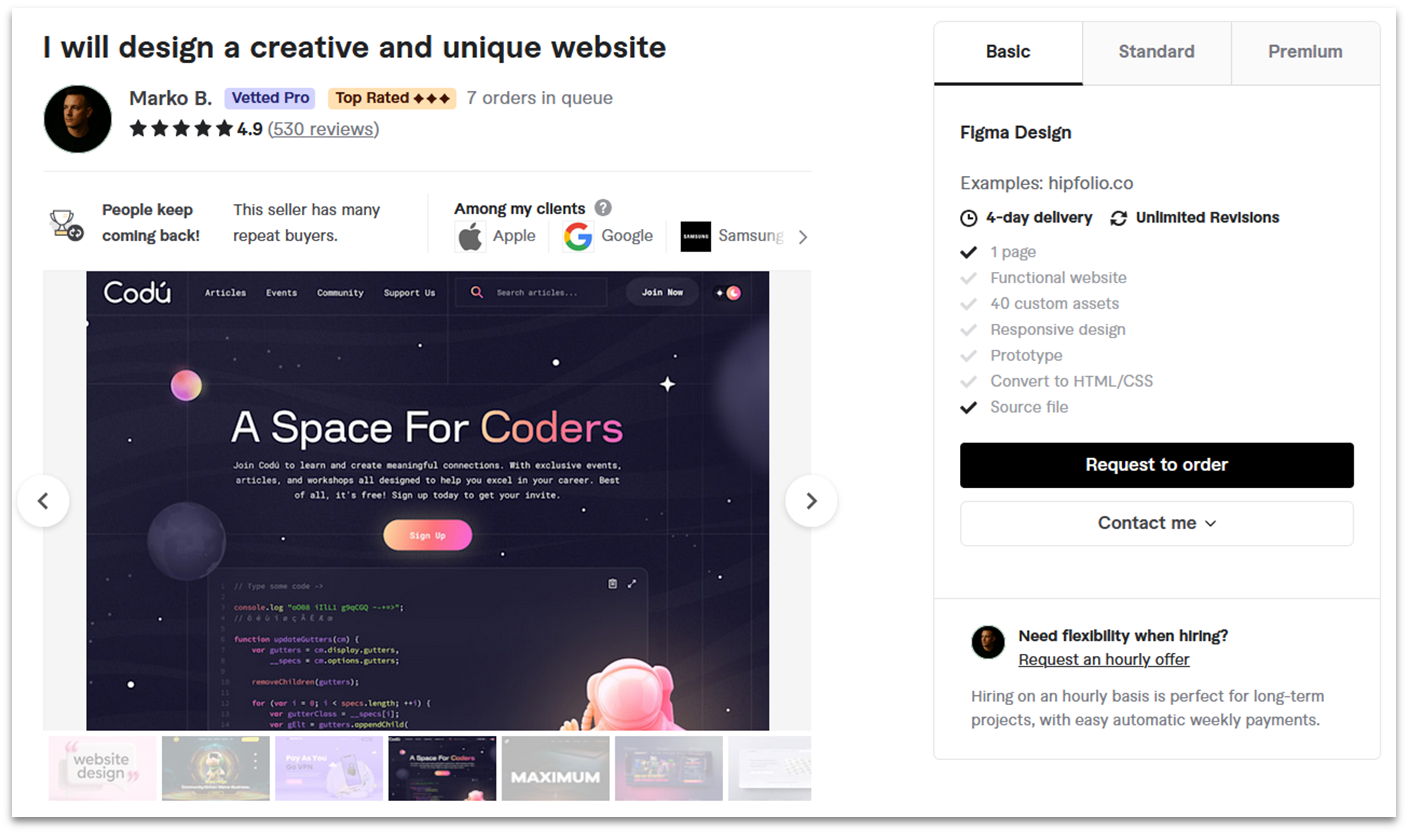
Marko B. is a seasoned web designer who’s worked with top brands like Apple, Google, and Samsung. While his basic package only delivers a single-page design, his Standard and Premium packages provide fully-functional WordPress or Webflow sites.
Through his huge portfolio, Marko B. demonstrates an impressive capacity to adapt to the brand and style of each client while keeping all designs looking modern and attractive.
Bilal Khawaja: SEO-Optimized Responsive Website at a Fair Price
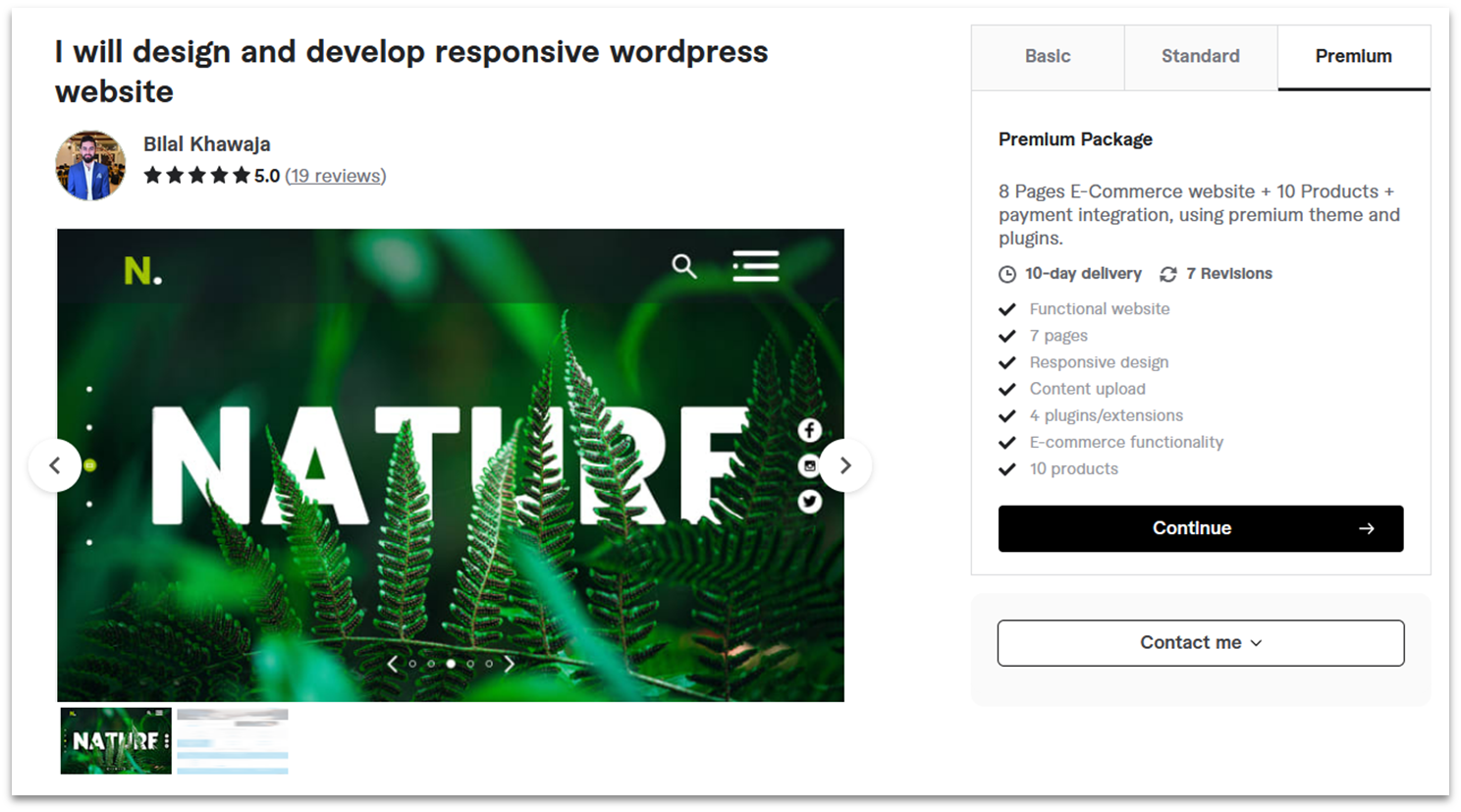
On the middle end of the scale, you can hire designers like Bilal Khawaja. For about $300, Bilal offers a unique, fully responsive, and SEO-optimized website in 7 days. He has over 500 five-star ratings and offers up to 5 revisions to ensure that you get exactly the website you want.
Dream Athena: Budget-Friendly Service for Responsive Website Design
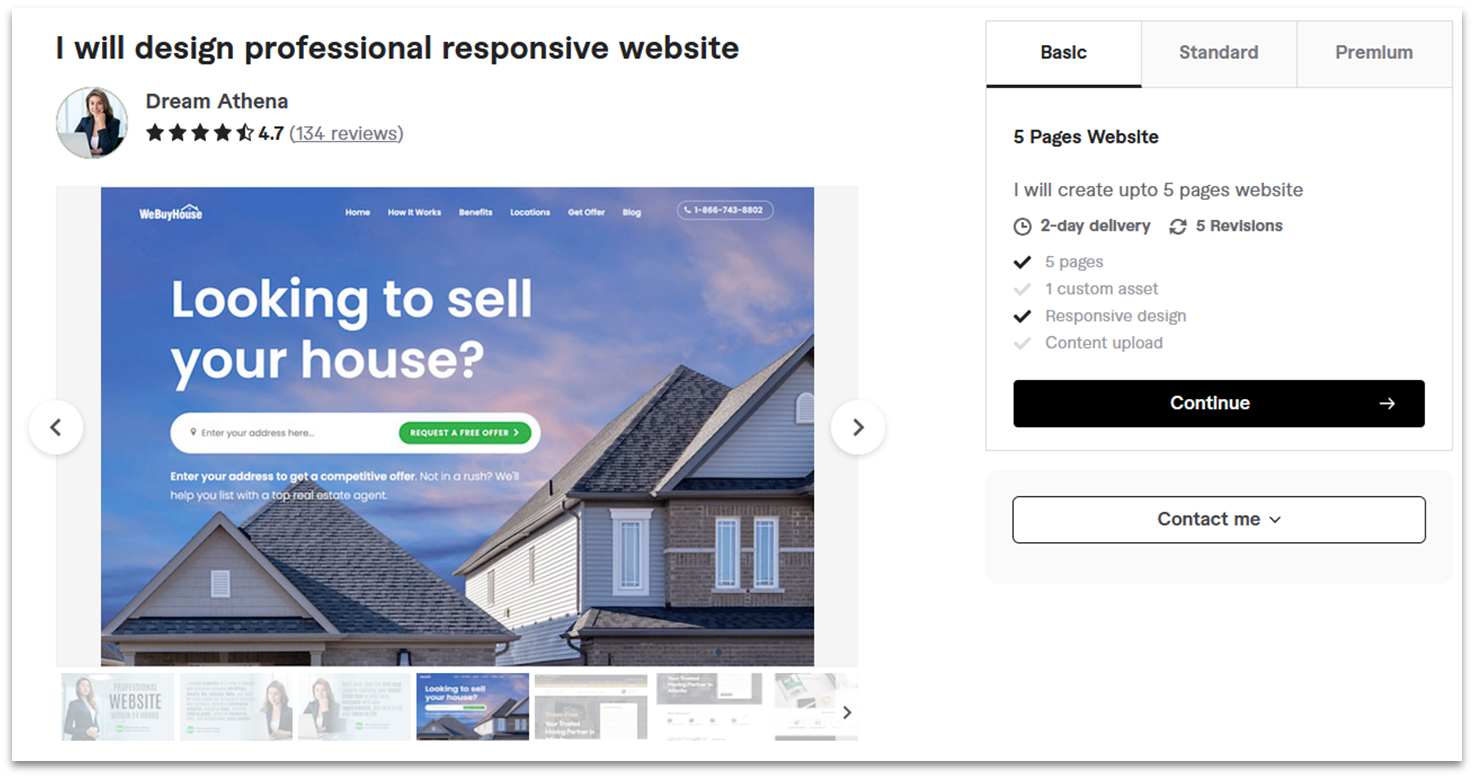
If you’re willing to take a chance on a slightly less experienced designer, Dream Athena can design a fully responsive website for as little as $80. She can also work with several website builders, like Shopify and Wix, so you can easily manage your website once it’s finished.
Hidden Website Costs Most Beginners Overlook
Once you’ve paid to set up your website, you’ll need to budget for ongoing monthly and yearly costs.
Recurring: Maintenance, Updates, and Renewals
While setting up your website, you’ll have to sign up for several subscriptions and ongoing services. This means that every month you’ll need to budget for the cost of your website builder or hosting provider. These fees typically cover automatic updates whenever the builder, CMS, or host upgrades their technology.
You also need to factor in the cost of any add-ons you’ve had to use, like security, backups, or technical support. If you’re using the WordPress CMS, you’ll likely be paying for several plugins every month.
If you’re paying for a professional service, you may have to pay ongoing fees that cover changes to your website. Depending on the service, they may even take care of keeping your WordPress CMS updated, too.
You can also expect to pay for more expensive renewals annually. Your domain name, SSL certificates, and some plugins will be paid on a yearly basis.
Website Content: Copy, Blogs, Photo, and Video
If you’re making and uploading your own website content, then the only cost is your time. However, most website owners commission content from freelancers or creative agencies, which comes with extra costs.
At the time of writing, the approximate cost of new or updated content is:
- Copywriting. $50–$200 per page of your website
- Blog posts. $50–$500 per article
- Professional photography. $100–$1,000 per session
- Video production. $500–$5,000 per video
You might also need content regularly, which means either hiring an in-house content team or a content agency.
Marketing: SEO, Ads, and Email Tools
While website content will do some of the SEO work for you, it’s not the whole picture. I can tell you from experience that, while SEO seems confusing when you’re getting started, there are a lot of optimizations you can do yourself.
However, if you did want to hire someone to handle it for you (and I can’t blame you for that!), you can expect to pay:
- Logos and branding. $0–$200+ one-off cost
- SEO audit. $500–$2,500 one-off cost, depending on the size of your website
- Google Ads. $100–$10,000+ per month
- Email marketing platform. $20–$200 per month, unless it’s included with your website builder
- Analytics tools. $0–$300 per month, but you’ll usually get some analytics included with website builders
- Social media management. $500–$5,000 per month
Legal Compliance
Websites must comply with data protection and accessibility laws. Otherwise, your business could face a hefty fine.
You could hire someone to handle this for you, but fortunately, compliance is generally simple and often doesn’t cost anything extra. The only exception is if you’re in an industry like healthcare that’s governed by stricter regulations.
That said, I would always suggest hiring someone to audit your website for compliance issues. Many providers offer audits for data protection laws like GDPR and accessibility regulations like the ADA. These will test your website and ensure that you’re meeting your legal requirements.
You can expect to pay $1,500+ for an accessibility audit, or $5,000+ for a data protection audit. The end price will depend on the level of compliance that’s legally required for your business, the size of your website, and more.
Tips and Tricks To Save Money When Building a Website
We’re reaching the end now. Phew! I can imagine you’re feeling a bit daunted by the hundreds (or thousands!) of dollars that I’ve suggested you might need to spend. But let me put your mind at ease – there are some simple strategies to save money on your website without impacting user experience:
- Bundle services. Website builders often bundle hosting, design, domain names, and security into one low-cost package. Similarly, hosting providers may offer free domain names or a percentage off if you buy multiple services.
- Shop around before you renew. Compare providers annually for domain, hosting, and other renewals. Prices can vary significantly, particularly once your introductory offers have run out. Remember that if you’re self-hosting, it’s usually easy to migrate your WordPress site to other hosting providers.
- Cancel unused features. Audit your website regularly and remove plugins or services you no longer use. Avoid auto-renewals on non-essential plugins or add-ons so you don’t accidentally pay for features you don’t need.
- Start small and scale up. Begin with essential features and add more as your business grows. Website builders are great for this, as you can easily switch to another plan without it affecting your site.
- Take advantage of free plans and trials. If you’re interested in a website builder, try it out for free where you can. This will let you see how useful it’ll be for your business without the financial risk.
- Grow your knowledge base. Learn how to perform basic website maintenance and create your own content to reduce ongoing costs.
- Value your time. Consider the hidden cost of your time (or your employees’). Hiring a freelancer or agency may actually be more cost-effective than handling everything in-house.
How Much Does It Really Cost To Make a Website?
The answer is, how much do you want to spend? The cost will depend on your method, your purpose, and your website’s needs. Though there are options for every budget, most professionals can expect a monthly cost of around $30, plus a bit more at the very start.
If you want to create a free website, there are website builders that can get you there, but you’ll have to deal with a builder subdomain, ads, and limited resources. Of all the free options, I recommend Wix’s excellent free plan, since it still gives you access to its full creative control features.
If you need your website for more than a personal project, consider investing in a paid website builder plan, which can cost anywhere from $3 to $150. This will allow you to connect to your own domain, remove ads, and access additional resources. Wix is still a good option if you’re willing to pay for a premium plan, but you can get outstanding business features with Squarespace.
That said, hosting your own website (with WordPress or not) gives you a lot more options for scalability, customization, and fine-tuning. There’s more of a learning curve, but you’ll be able to control practically every aspect of your site. You can get high-quality hosting with Hostinger for as little as $2.99 a month.
Finally, you could invest a little more to take the weight off your shoulders and hire a professional designer. You can find talented and budget-friendly designers on Fiverr selling services for as low as $100.
Here’s how all of the different paid options compare side by side:
| Paid Website Builder | Self-Hosted WordPress Website | Professional Designer | |
|---|---|---|---|
| Website Design | $0 | $0 | $100–$1,500 one-off cost |
| Subscription | $3–$150+ per month | $0 | $0–$30 per month (if using website builder) |
| Website Domain | $0.99–$200+ per year | $9–$15 per year | $9–$15 per year |
| Website Hosting | $0 | $1.50–$70 per month | $1.50–$70 per month (if using WordPress.org) |
| SSL Certificate | $0 | $0–$200 per year (but often included for free with hosting packages) | $0–$200 per year (but often included for free with hosting packages and builder plans) |
| Website Template/Theme | $0–$250+ one-off cost | $0–$250+ one-off cost | $0–$250+ one-off cost |
| Plugins | $0–$100+ per month, or larger one-off cost | $0–$100+ per month, or larger one-off cost | $0–$100+ per month, or larger one-off cost |
| Custom Email Address | $0–$15 per month | $0–$15 per month | $0–$15 per month |
| Total | $5–$300+ per month | $3–$185 per month (plus $0–$250+ once-off cost) |
$3–$200 per month (plus $100–$1,750 once-off costs) |
FAQs
Can you build a website for free?
Yes, you can build a basic website using a free website builder. These free plans have similar limitations, like displaying ads for the platform and minimal storage space, but they’re a good starting point. They also allow you to test out a few different builders before you invest.
What’s the most affordable way to create a website?
I recommend using a premium website builder because your subscription covers everything you need to run a successful website. My top choice is Wix, as its mid-level Core plan costs only $29.00, but you’ll get top-tier features like Google Ads support, social media selling, service booking support, and more.
What does a website cost per month to run?
Website costs vary based on your needs. A basic website typically costs between $10–$30 per month, which includes hosting, a domain name, and basic features. Costs are roughly the same whether you use a website builder or a self-hosted approach.
For larger business websites, costs can range from $30–$300+ monthly. This gets you all of the standard features, plus custom functionality, e-commerce capabilities, and advanced security. Additional expenses may include SSL certificates, premium themes, plugins, and maintenance services.
How much does it cost to hire someone to build a website?
A basic informational website may cost $500–$2,000, while e-commerce sites or custom-built platforms can cost upwards of $50,000. Freelancers typically charge $50–$150 per hour, while agencies charge more.
How much should I pay for an e-commerce website?
That depends on whether you’re using a website builder or a custom solution. E-commerce web builders can cost $30–$200+/month, but this includes features specific to selling online. They typically include unlimited storage to support stores of any size, support for various sales channels, tax calculation, and built-in payment gateway integrations.
Custom solutions from website designers can cost thousands or tens of thousands, depending on the size of the website and the features you’ll need.
How much does it cost to build a website for a small business?
You can create a small business website affordably using website builders like Wix or Squarespace. These platforms offer monthly plans ranging from $16–$40, which include hosting, a domain name, and essential business features.
It’s easy to get started with website builders, too. Our comprehensive Wix starter guide is here to help.





